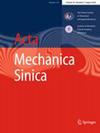Study of oxygen transport and thrombosis risk with membrane oxygenators
Abstract
To build a thrombosis risk assessment model applicable to oxygenators and investigate the effects of oxygenator external configuration and membrane filaments macroscopic parameters on the performances of cylindrical oxygenators. A thrombosis driven by surface contact, shear stress, and anticoagulant drugs, and considering the effects of these factors on platelet, coagulation factor, and hemostatic protein function risk model was developed and validated with clinical oxygenators. The thrombosis model combined with a pressure loss model and an oxygen partial pressure model was used to assess the effect of the external structure and macroscopic parameters of the membrane filaments (height and thickness) on the performance of the cylindrical oxygenator. The cylindrical oxygenator center circular inflow manner and tangential outflow manner from the middle region of the outside benefit the overall performance of the oxygenator (reduced pressure loss and thrombosis risk). Increasing the radial thickness of the oxygenator membrane filaments significantly increased the oxygen exchange ability of the oxygenator and reduced the thrombosis risk compared to increasing the axial height, but with a smaller increase in pressure loss. Contact activation leading to thrombin production contributes significantly to oxygenator thrombosis. The oxygenator has little effect on platelet receptor function. Thrombosis in cylindrical oxygenators tends to form in the flow-flow/border impingement regions because of the high concentration of coagulation factors and long residence times in these regions. A thrombosis risk assessment model applicable to oxygenators was developed. We disclosed the mechanism of the impact of oxygenator external configuration and membrane filaments macroscopic parameters on its internal flow fields, the risk of thrombosis, and the efficiency of gas exchange, which are useful for the design and optimization of cylindrical oxygenators.

 求助内容:
求助内容: 应助结果提醒方式:
应助结果提醒方式:


